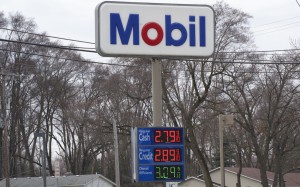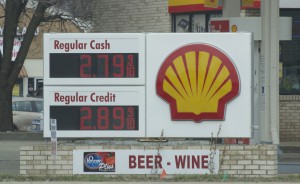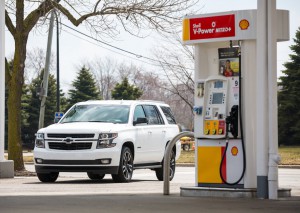
The drone strike on Saudi Arabia’s largest oil processing facility is expected to drive gas prices up in the near term..
The price of gasoline is expected to jump during next several days on the heels of a drone attack on the world’s largest oil processing facility in Saudi Arabia, according to analysts that follow the oil business.
Gasoline price held steady at $2.56 per gallon in the survey by AAA, which also noted actually had dropped by 7 cents per gallon.
But motorists can expect some volatility at the pump in the coming days and weeks.
(Toyota Testing Solar-Powered Electric Prius)
During the weekend, Saudi Arabia experienced attacks on two major oil facilities – including the world’s largest, Abqaiq. The attacks have taken 5.7 million barrels of crude oil per day off the market, accounting for about 6% of the global supply.
The price of crude oil jumped more $8 per gallon on global markets.
Prior to the attacks, global crude oil supply was very healthy, in fact, there was a global glut of stock. Regardless, initial market reaction to the attacks spiked crude oil prices. At the start of the work week, crude oil (West Texas Intermediate, WTI) is trading for $5 per barrel more than on Friday’s closing, up to $61 per barrel – a price point for crude not seen since May.
(Growing Number of States Penalizing EV Owners with Added Taxes and Fees)
“Americans can expect local pump prices to start to increase this week. The jump could end up being as much as a quarter per gallon throughout this month,” said Jeanette Casselano, AAA spokesperson. “Whether this is a short- or long-term trend will be determined by the price of crude oil prices and how quickly the facilities in Saudi Arabia can recover and get back online.”
Damage to the facilities is still being assessed, but there is no word if it will be days, weeks or even months before infrastructure is repaired. To ease concerns, President Trump said he has authorized the release of crude from the Strategic Petroleum Reserve. Other Saudi oil-consuming countries also have emergency reserves to help back-fill the global loss, if needed.
The U.S., AAA noted, currently depends less on crude imports from Saudi Arabia.

Hoping to head off a price spike, President Donald Trump is releasing some of the Strategic Petroleum Reserve..
The latest Energy Information Administration report showed that the U.S. imported the least amount of crude oil from Saudi this decade. In the first half of this year, on average the U.S. imported about 18 million barrels compared to 35.6 million barrels in the first half of 2017.
(Gas Prices Expected to Fall 25 Cents a Gallon This Autumn)
While U.S. gasoline stock levels have been decreasing the past few weeks, total domestic stocks sit at 228 million barrels, which is ahead of the five-year average for this time of year by several million barrels. Today’s national gas price average is 7 cents cheaper than last month and 28 cents cheaper than this time last year, AAA noted.


Experienced a one day 30 cent jump on the 16th.
But truth is my neck of the woods has been experiencing one day 15 ~ 25 cent jumps then slow trickles back down by half or so that only jump back up 15 ~ 25 throughout the summer. Been a real rollercoaster and if you needed to buy petrol during the upticks you were one unhappy camper.